61 Years in, Lamborghini Is Finally Ready to Go Racing
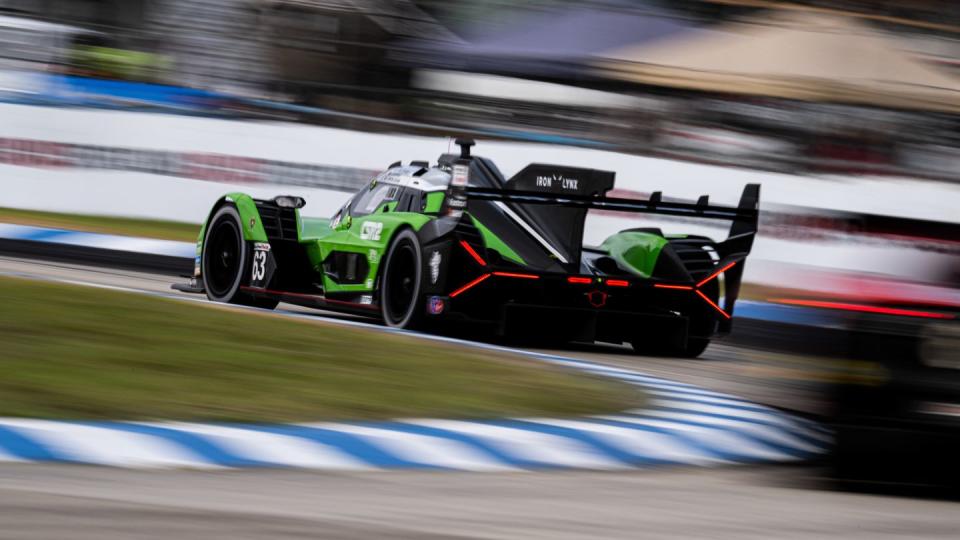
You know the Lamborghini origin story. Tractor builder Ferrucio Lamborghini was unhappy with the specifics of his harsh and fragile Ferrari road cars, so he started to build his own grand tourers and, eventually, supercars. In sharp contrast to Ferrari, which was, at the time, in the middle of a run of seven Le Mans wins in eight attempts, Lamborghini opted not to race his cars. They were road cars, and they would be proved on the road.
The automotive landscape has changed a lot in the past 61 years. In one regard, it has not. After a long break, racing only in Formula 1 and GT categories, Ferrari came back to the top class at Le Mans just last year and won again. That makes Ferrari again the target at Lamborghini, where a serious topflight racing program is now underway for the first time ever.
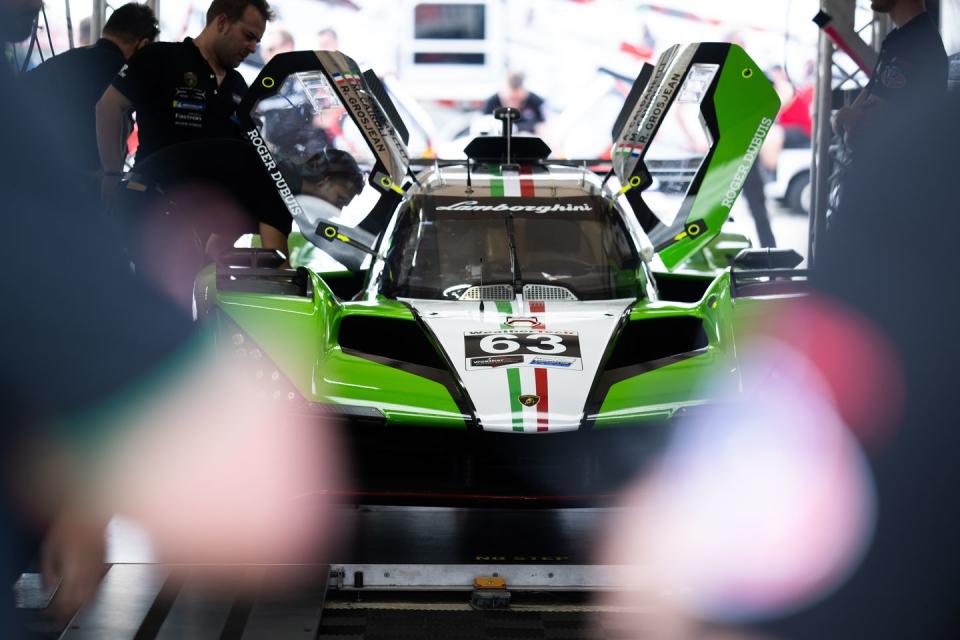
And that does mean ever. The SC63 Le Mans hypercar is the culmination of a Squadra Corse racing program built recently from the ground up—a program that was, until this car's launch, focused on GT racing and the limited professional applications of cars built for those rule sets. Before Squadra Corse, Lamborghini's entire racing history was one of oddball one-off programs that are remembered as mere trivia.
The best was a Formula 1 car built for a program called Modena Team as part of a short-lived customer deal in just the 1991 season. That car never scored a single point, the team disappeared before 1992, and the "Chrysler powered by Lamborghini" V-12 at its heart was more notable for the time it spent in the back of a Minardi. That less-than-halfhearted brief shot at F1 was the closest thing the brand ever had to a racing pedigree in its first 50 years.
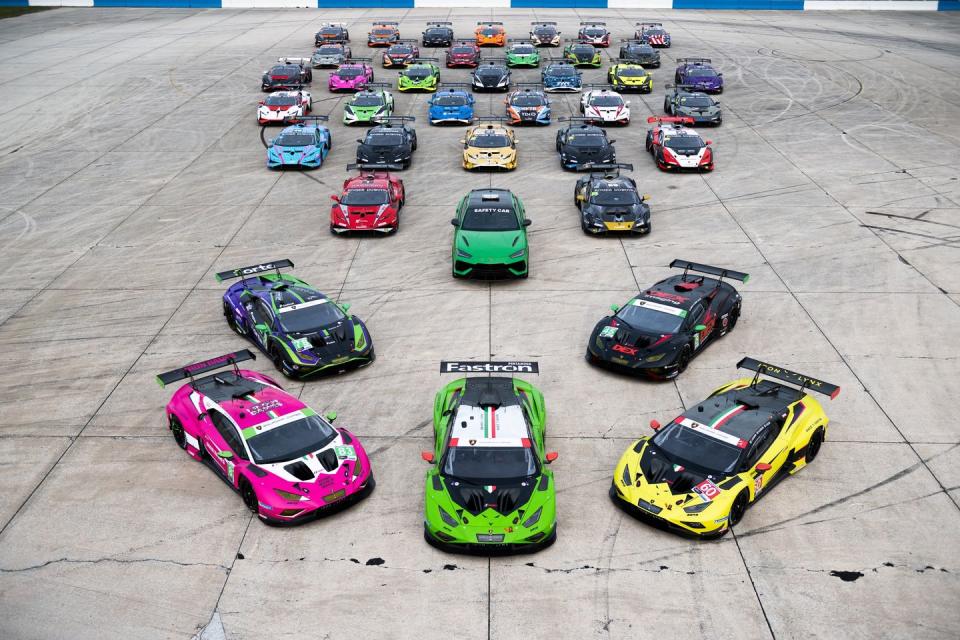
Squadra Corse changed everything. First, it was a program for Gallardo spec racing. Then came the Huracán GT3, a long-lived machine that has been refreshed twice. The ubiquity of the GT3 class meant that the Huracán got Lamborghini into GT racing fields globally, allowing Lamborghini customers to compete against the best from Ferrari and Porsche in a wide variety of IMSA, DTM, and SRO GT events. Wins and championships around the world proved that the company could build a competitive car, and a growing roster of factory talent to support the cars prepared Lamborghini well for what came next.
"Ferruccio Lamborghini, unlike other founders, always said that he did not need to go racing to prove that our cars are the best. This was his mantra and his philosophy," Lamborghini CEO Stephan Winkelmann tells Road & Track. But that was then. This is now, and as Winkelmann points out, "the brand is changing, but so are the people, the environment, the world."
"And now, with this LMDh [racing rule set], it was tempting for us—for technical reasons, for strategic ones," he says. "Because now we are in the midst of the transmission from ICE engines to hybrid cars. This is the reason it fits LMDh. We have the hybrid system. It's endurance racing, so it's testing materials. We also wanted to have global visibility, so we decided to go with both FIA WEC and IMSA, and we have the globe covered."
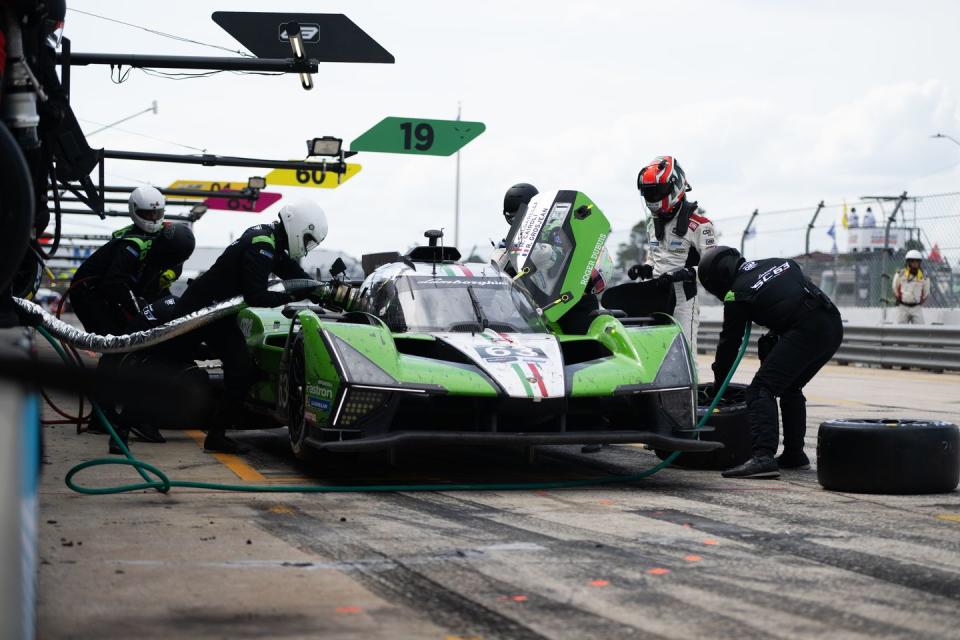
That led to SC63, a step into the sort of racing where wins go in history books rather than press releases. The car is sharp, bright green, and covered with hexagons. That means it fits perfectly into the modern Lamborghini design language, even before you get to the headlight and taillight pattern shared with Lamborghini's new Revuelto supercar. It is also the car that will show whether Lamborghini is capable of competing on this stage.
The SC63 is built to the LMDh regulation set, the one of two new top-class rule sets for IMSA and the FIA World Endurance Championship that requires teams to use a standard chassis. Lamborghini and Squadra Corse chose to partner with Ligier, becoming the first and only manufacturer to build a prototype around that specific tub. Unlike in the LMH rule set, which Ferrari and Toyota use, every other manufacturer here shares their chassis with at least one car: BMW's Dallara tub is used on a Cadillac, while Acura's ORECA tub is also at the heart of an Alpine. The Multimatic tub that makes the spine of the Porsche 963 was originally intended to be shared with a stillborn Audi prototype that was canceled only after a mostly completed car was rumored to be delivered to a partner team for testing.
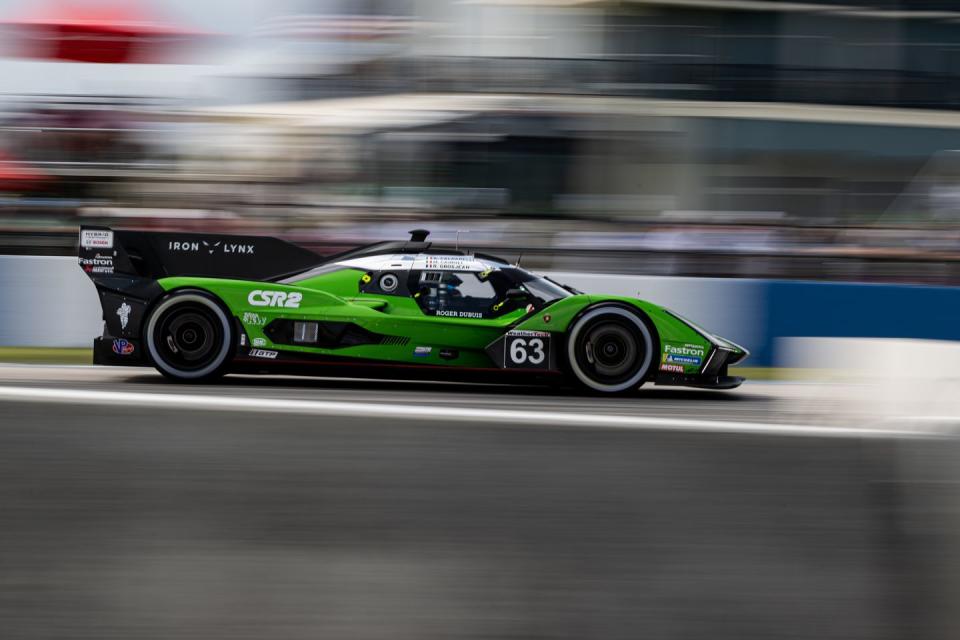
That means Lamborghini is figuring out its chassis along with everything else. The manufacturer is also one of only two brands to introduce its LMDh car a year after the rule set was introduced, and a crash in testing last August delayed the program's early development. The brand also has just one car in both championships, and that single car is running only in endurance races in America. Considering all of these factors, there is no way around it: Lamborghini is behind. Brands like Porsche and Ferrari began testing their cars in 2022, putting Lamborghini close to a year and a half behind.
The team knows this. At Sebring, brand CTO Rouven Mohr told Road & Track that the team was chasing consistency in its pace as much as all-out speed. Top classes in both IMSA and WEC racing implement balance of performance, so all Lamborghini has to do to have a shot at competing over one lap is get the car into its expected performance window. That consistency is what will really determine whether the car will be capable of winning against the best.
Building the consistency is already a challenge, and it is an even bigger one when the team is currently racing with just one car. Mohr says that the team's single-car entry in each series, born entirely of the realities of getting the program up and running, is "one of the biggest disadvantages" the program faces.
"If you have three, four cars on the grid, you're collecting data," Mohr notes. "You can also use a free practice to solve things much faster, you can have one setup strategy on car A and one on car B, compare, and can make a choice for the race."
This is an advantage every other GTP program at Sebring has, even the Cadillac team split between two factory partners' operations. Mohr says that this will be resolved when the team adds an additional entry next year, but until then, it is just something Lamborghini has to accept.
"This was a disadvantage, but there was no way around. You have to be realistic."
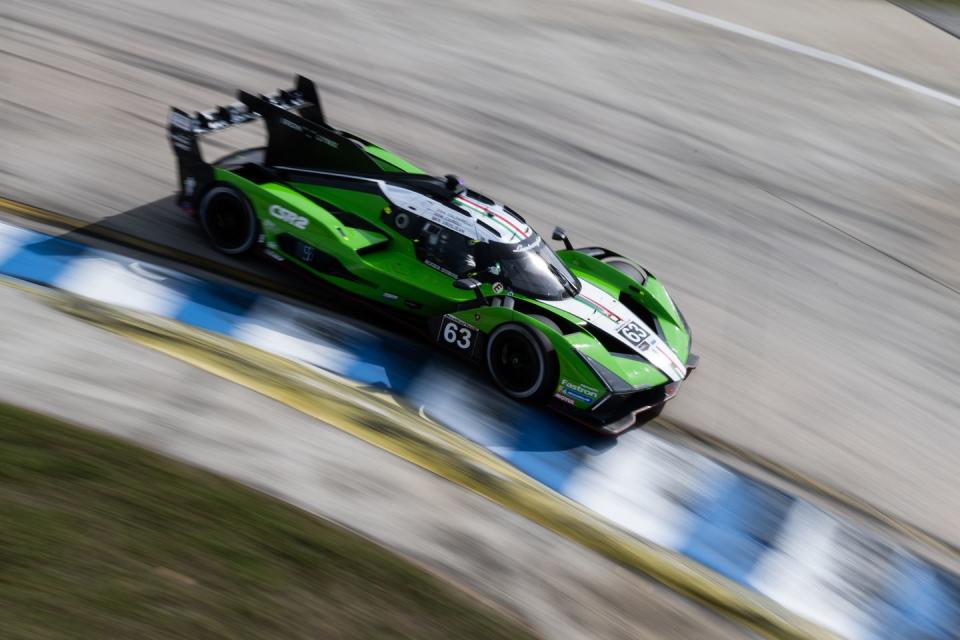
Sebring was the car's second-ever race. Like its first in the World Endurance Championship at Qatar two weeks earlier, it was uneventful. That's a good thing—it means the brand was able to gather vital data on how to improve both overall pace and the consistency of that pace. It also means the car is surprisingly reliable, now having finished 20 hours of racing without a breakdown of note. For comparison, only four of the nine LMDh-spec cars that debuted in the 2023 24 Hours of Daytona finished the race within 10 laps of the winner.
That is a serious achievement, especially given the harsh terrain at Sebring. Massive rectangular slabs of uneven concrete make for a unique suspension test that requires engineers to figure out how to keep all four wheels planted through bumpy high-speed corners and drivers to keep a car together through a 60-strong field of traffic. Every bump is a test of how well the car is held together, and every lap is a new chance for an LMP2 or GTD car to spin off track in front of the SC63.

Sebring was a test, and it was one the Iron Lynx–run Lamborghini passed. Now that the car has proved to be reliable, the rest of the year will be about making it faster and more consistent. That includes in an upcoming high-profile debut at Le Mans, where eyes will be on the audacious green Lamborghini. Expectations for that first run at the 24-hour classic should be held in check, but if things go right, next year will be a different story. The team plans to expand to two cars, and customer racing is a possibility too. If Iron Lynx and Squadra Corse can keep improving the SC63, expectations for wins will follow.
That brings stakes. Through its first six decades, Lamborghini avoided the risks of showing up to the track and coming away without any trophies. But in the seventh, it has a car designed to win the world's biggest endurance races. For the program to succeed, the SC63 must eventually start winning.
You Might Also Like

 Yahoo Autos
Yahoo Autos 